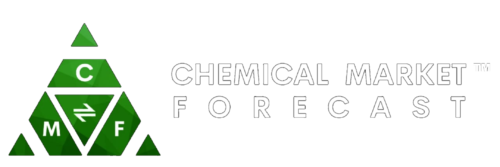Battery Material Recycling as the name suggests is the technology used to recover rare metals from batteries. The technology optimizes cost and decreases hazardous waste by procuring the target metal through physical and chemical separation. The derived material can be processed and resold within the market thus increasing the usability of the metal.
The growth in the Electric vehicles market is one of the key drivers for the battery material recycling vertical. An upsurge in the use and adoption of EVs has led to subsequent growth in the Lithium-ion battery market. With the growth in the EVs market, the quantity of spent lithium-ion batteries has also been increasing. Therefore, developing technologies to increase the useful life of battery materials is of utmost importance.
Market Trends for Battery Materials Recycling
As of 2020, China generated 500,000 metric tonnes of used Li-ion batteries. The global number of spent Lithium-ion batteries is expected to attain a value of roughly 2 million metric tonnes per year by the year 2030. Presently, several end-users are disposing of these batteries in public landfills that cause ecological imbalance. Though technologies for the recycling of battery materials exist within the market, this methodology is not used widely amongst industry players. For instance, in Australia, roughly 2-3% of spend lithium-ion batteries are collected and sent offshore for recycling. The rate of recycling for Lithium-ion batteries is less than 5% within developed economies like the European Union and the United States.
The unpopularity of these sustainable routes stems from economic and logistical issues associated with the battery materials recycling process. Technical constraints and regulatory factors further limit the growth of this market.
How does the battery materials recycling market impact the supply chain
Combat is one of the key materials used for the fabrication of a Li-ion battery. As mentioned in a CSIRO report, roughly 50% of the world’s cobalt production is obtained from the Democratic Republic of Congo. The material is obtained via armed conflicts, illegal mining operations, human rights abuses, and harmful environmental practices. Recycling batteries and formulating cathodes would reduce the reliance of the supply chain on such problematic sources. Hence the security of the supply chain can be maintained through this initiative.
Battery Materials Recycling Process:
Most of the batteries that undergo recycling make use of a high temperature melting and extraction process also known as smelting This technology is used in commercial facilities across regions like Asia, Europe, and Canada. The process is highly energy and cost-intensive. Moreover, the percentage recovery associated with this technology is less. Thus the overall adaptability of this process in terms of cost and technology constraint serves as a key restraint for this vertical.
Battery materials recycling is a niche area of study carried out in small groups and academic institutions. Startups are trying to develop new and improved industrial processes to further optimize the recovery rate for raw material recycling. Aging electric vehicles are expected to be one of the key sources of batteries. Large multifaceted operations are being conducted on an industrial scale to tackle this ongoing issue.
An upcoming method that is presently being industrialized is a combination of hydrometallurgical and mechanical technologies. On an industrial scale, this method makes use of a low CO2 process to recover battery materials like lithium, cobalt, nickel, and manganese. The recycled material can be used to produce new batteries. The low CO2 hydrometallurgical process is a sustainable technology that addresses the process limitations faced by the industry on implementing conventional methods. This technology has a percentage recovery of roughly 80%.
The low CO2 method was undertaken by performing a trade-off study with the conventional smelting process. The procedure has a low carbon footprint which allows the industries to attain sustainable goals.
The technology makes use of a chemical means of separation to obtain the target material. A Lithium-ion battery is disassembled post which the battery’s black mass is treated via hydrometallurgical methods. The methodology employed involves precipitation of the required material to recover the same. The technology allows scarce minerals to be recovered and delivered to the battery manufacturers’.
Global initiatives taken to boost the battery raw materials recycling market.
As of January 2021, the US Department of Energy announced the creation of the DOEs first Li-ion battery recycling R&D center. The establishment is also known as the ReCell center. The R&D center aims on making the battery raw materials recycling market both competitive and profitable. The establishment of this center is expected to reduce the US’s dependence on foreign sources of cobalt and other battery materials. ReCell launched with an initial investment of USD 15 Million.
Another initiative undertaken by the DOE is the launch of the Battery Recycling Prize. The program is a USD 5.5 Million initiative that is expected to support start-ups and technology developers who are seeking opportunities within this market. The launch of this initiative is also expected to increase the number of unicorns present across the globe.
The UK is another country that has been taking initiatives to establish a foothold within the battery materials recycling market. The UK has created a large consortium led by the University of Birmingham.

